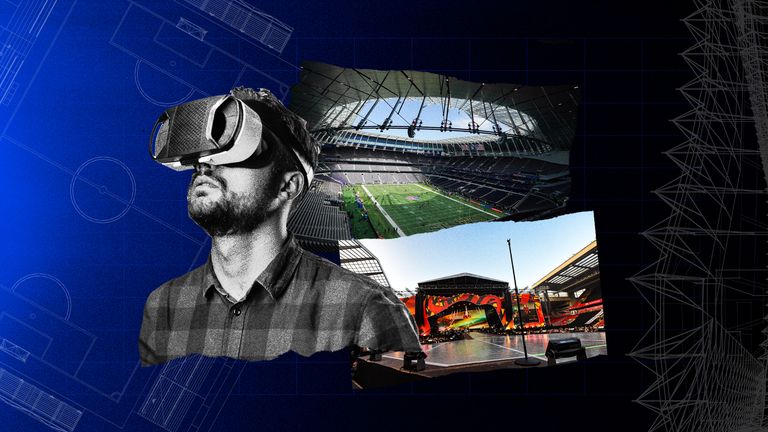European Football's Growing Sponsorship Landscape
Football sponsorships have evolved from modest beginnings into a multi-billion-euro industry. Today, these deals focus on more than just logos, emphasising fan experiences, digital engagement, and data-driven strategies. New technologies and platforms are changing the game.
Kyriakos Lykourgos
4/16/20254 min read


European Football's Growing Sponsorship Landscape
Sponsorship Evolution
Historically, sponsorships in football were fairly modest. Brands wanted to associate their image with specific teams or tournaments, but the deals were far from the colossal ones we see today. The beginning of brands understanding the power and influence of football and how this is easily transferable to financial gain didn’t occur until the late 20th century. Eintracht Braunschweig (Germany) was the first professional team in Europe to wear a sponsor’s logo (Jägermeister) on their shirt in 1973. Brands started seeing football not only as a sport, and more as a path for global brand recognition.
The rise of international broadcasting and the internet made European football more commercially attractive. The sponsorship model, of course, adapted to this revelation. Major companies like Heineken, Gazprom, and Adidas started signing long-term deals that would shape the future of football sponsorships.
Record Revenues and Strategic Deals
Today, football sponsorships are a multi-billion-euro industry. According to UEFA's latest financial reports, European clubs reached a record number of €26.8 billion in revenues for the 2023 financial year. UEFA itself, as a governing body, has also capitalised on this by securing high-value partnerships that exceed traditional sponsorship deals.
UEFA’s partnership with Heineken, for example, isn’t just about putting a logo on the side of the stadium. This partnership covers digital activations, fan engagement campaigns, and exclusivity deals for major events (e.g., the Champions League). Heineken has capitalised on digital media using social media campaigns, fan experiences, and also in-stadium activations that deepen its relationship with consumers using experiential marketing techniques.
Another example is Spotify’s €280 million partnership with FC Barcelona. Their deal includes the naming rights of the Camp Nou stadium and many other activations such as fan experiences and branded content across digital & physical platforms. The club is also integrating music enthusiasts by wearing jerseys in the game with the names/logos of artists featured on Spotify. This reflects that some partnerships, when done right, can lead to much more than just exposure; they can lead to cultural alignment and emotional engagement.
New Tech, New Platforms, and Shifting Strategies
The future landscape of football sponsorship will likely keep evolving toward digital-first strategies. The uncertain factor is which new platforms will emerge and which new technologies will be used to shape the game. For instance, streaming services are becoming key players in the sponsorship space. Subscription-based Over-the-Top (OTT) platforms like Amazon Prime and ESPN+ are replacing the traditional streaming models. The technology and style of these platforms allow for consistent revenue, new opportunities for brand integration, and increased engagement/accessibility for fans.
OTT Integration
Traditional broadcasting is no longer as dominant as it used to be. UEFA’s 2023 Tech & Innovation report mentions that over half of fans under 30 years old follow matches via non-linear platforms, including streaming services and social media. Ligue 1 in France has signed an exclusive broadcasting deal with Amazon Prime Video that will allow fans to enjoy new interactive features, alternate commentary, player stats, and on-demand highlights. These platforms also engage fans in a more user-friendly way, making their products highly accessible. Moreover, in the U.S, Apple has a deal with Major League Soccer, which is viewed as a big success for both parties. The platform offers a seamless user experience, combining live coverage with sponsor integration. Partnerships like this can be seen as blueprints for the European leagues. These platforms allow for embedded brand activations, and they give sponsors access to user behaviour data, targeted advertising, and personalised content. Thus, they are much more attractive for sponsors than traditional media.
Social Media
Social media is widely used by big brands for attention and engagement. In the football industry, the first major partnership between a social media platform and an event took place at EURO 2020, where the tournament partnered with TikTok for the first entertainment platform sponsorship. The tournament used the platform as a major channel to interact with the fans, with the #EURO2020 hashtag generating more than 5 billion views. To reach younger audiences, who are usually ‘digitally native’, brands are collaborating with influencers, using real-time content, and creating other sorts of activations that attract these audiences.
AR/VR
This section can be seen as the more futuristic sector. Football clubs/organisations and their sponsors are using technologies to create new forms of fan interaction. For example, Manchester City and Sony are working together to create a metaverse replica of Manchester City’s stadium. Through this, they aim to give an immersive experience to fans around the world who are not able to attend the game in Manchester. Moreover, UEFA has explored AR activations for sponsor branding. This includes interactive fan filters and other sorts of mobile-based matchday engagement tools. These technologies allow for brand integration with virtual spaces that were not feasible some years ago.
Data, Personalisation, and ROI
Clubs and governing bodies use improved analytics and fan data to offer sponsors deeper audience insights. The Spanish League uses LaLiga tech, which provides sponsors with advanced tracking capabilities that allow them to use hyper-targeted messaging based on location, demographics, or other behaviour. Another game-changing tool that is available through these technological advancements is that brands are able to track real-time ROI. This helps them adapt their messaging instantly and base it on reactions or engagement levels during a live sporting event. UEFA reports that over 40% of fans use a second screen while watching matches. This highlights the growing need for integrated, data-driven strategies that reach fans across multiple touchpoints.
Conclusion
Through the years, European football sponsorships have evolved from basic brand exposure to a multi-layered industry built on data, creativity, and connection. Today's sponsors are not only chasing visibility, but they also want relevance. Their aim is to be part of deals that can deliver fan engagement, bring ROI, and also reflect their values. Because of this, we see long-term strategic deals like Heineken and the Champions League. These modern-age partnerships live across platforms, have in-stadium activations and immersive digital campaigns.
Moreover, brands view football as something more than a sport; it is now used by brands as a cultural platform. That means brands must show up with purpose. They engage in sponsorships that support sustainability, diversity, and community involvement. Brands use their sponsorships as a way to promote their brand identity and values.
UEFA and European clubs are experimenting with new technologies, formats, and business models. Fans are more digitally connected than ever before, engaging with the sport across various media. This gives the opportunity for sponsors to be more innovative and form exciting, modern sponsorship activations.
Lastly, the key takeaway is that the next era, where real opportunities lie, will not be about just putting your name on the game, but about building value within it.
